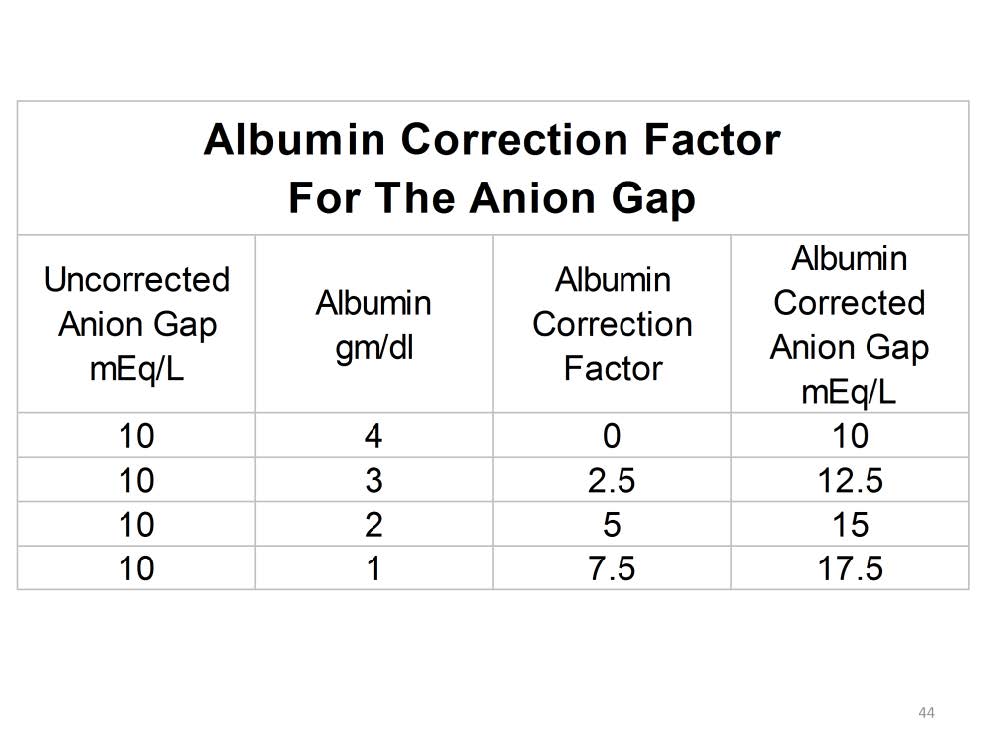
AG is a controversial number, but it is generally accepted that a severely elevated anion gap value has good positive predictive value for complications and mortality and represents an indirect method of assessing a change in intracellular pH. However its predictive value can be further enhanced by making two primary corrections; one for serum albumin concentration and one for renal function (blood urea nitrogen = BUN).
Albumin is a negatively charged molecule and 4 gm/dl adds about 10 mEq/L to the AG value. So each gm/dl of albumin contributes 2.5 mEq/L to the AG. If the albumin is abnormally low the AG will read erroneously low. For each gm/dl that the albumin is below 4 mEq/L, 2.5 mEq/L needs to be added to the AG value. The table illustrates how the albumin correction can be applied.

Perfusion Theory is an educational platform for the Oxygen Pressure Field Theory (OPFT). August Krogh’s theoretical concept of the oxygen pressure field is explained and then applied to clinical applications in perfusion practice.